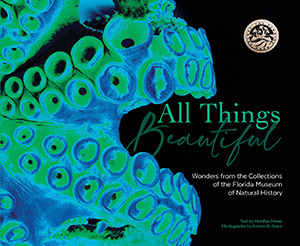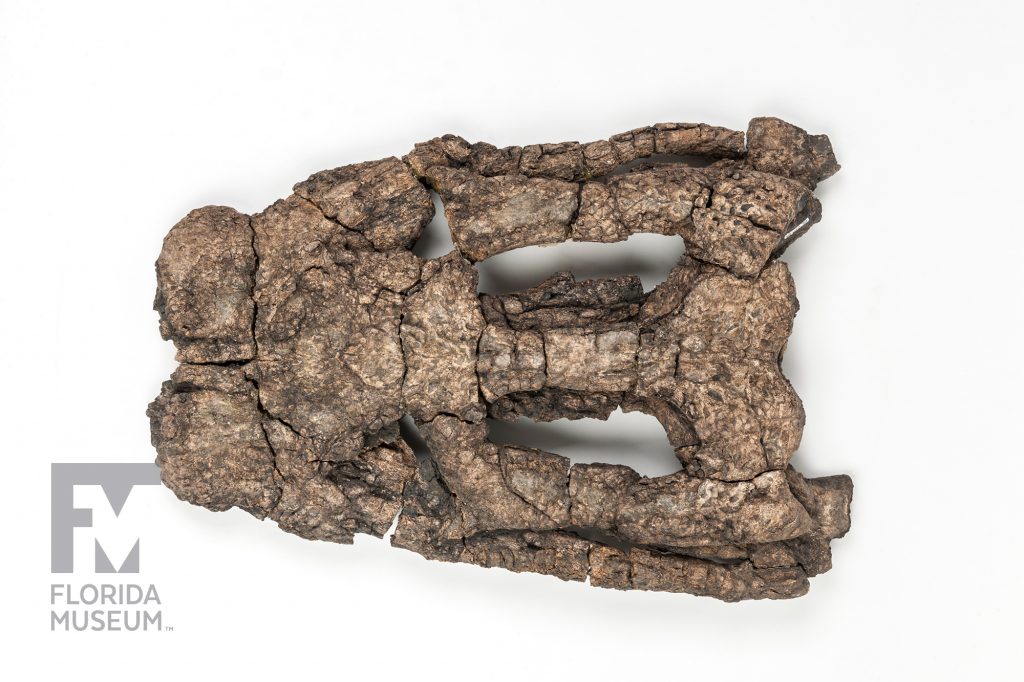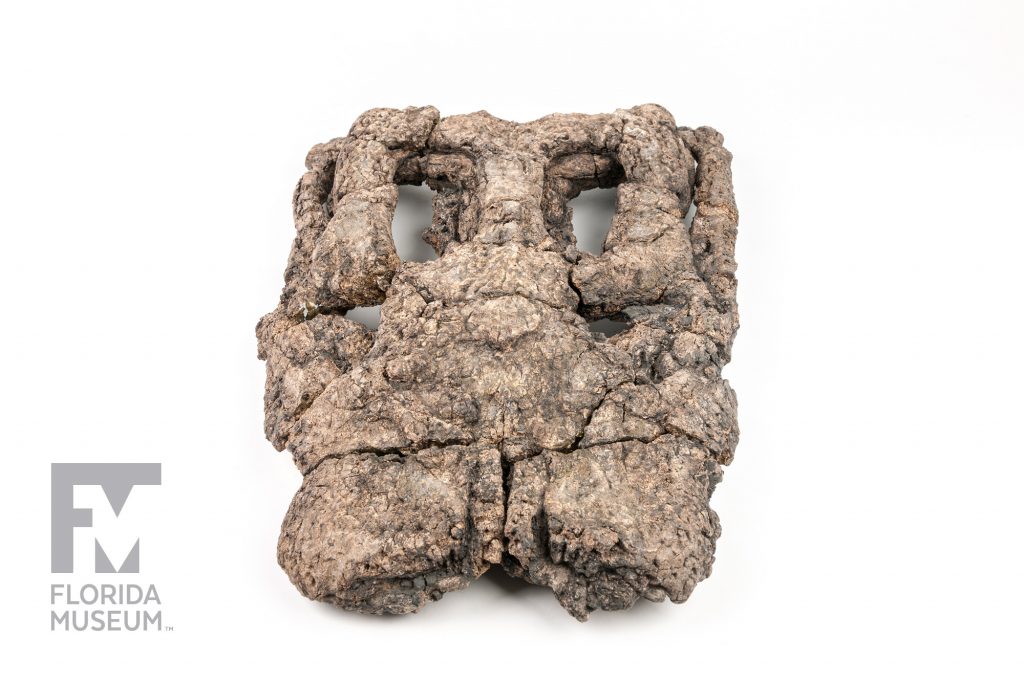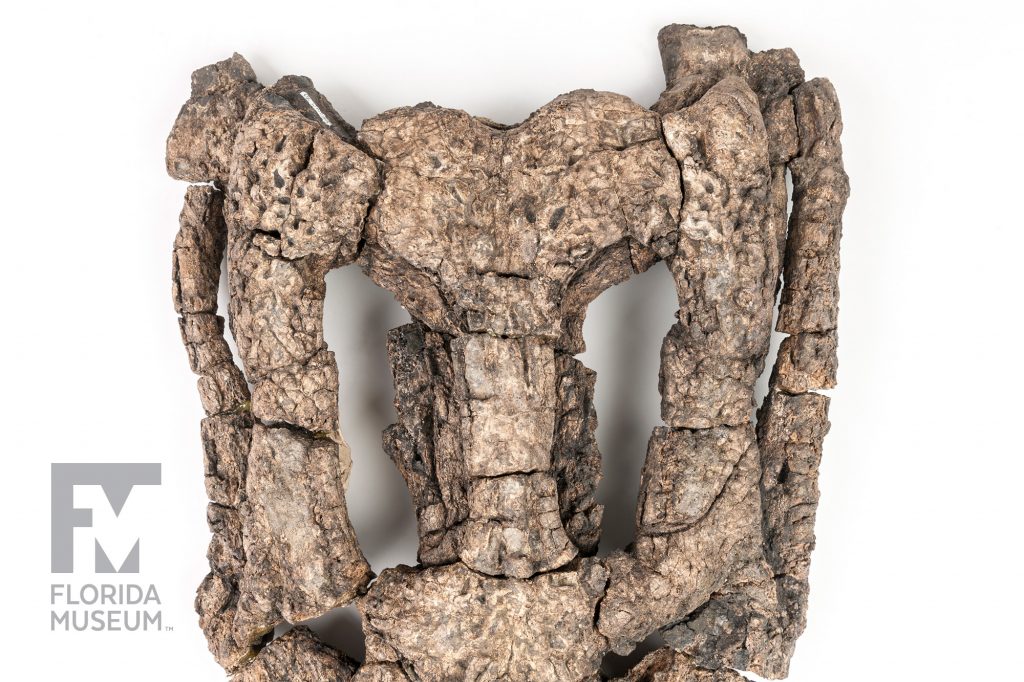This crocodile-like reptile had an unusually short snout, giving it an incredibly powerful bite well adapted to eating tougher prey like turtles. Though Dyrosaurids were fierce predators, they would have been easy prey for the much larger Titanoboa.
Summary
Blunt-snouted Dyrosaurid Skull (Anthracosuchus balrogus)
From La Guajira, Colombia
Lived ~60–58 million years ago
Collection
Story
Anthracosuchus balrogus was unearthed from the same layer of rock as Titanoboa in the Cerrejón coal mine of northern Colombia. The species is named for a ferocious fictional creature, the “Balrog,” that appeared in Tolkien’s novel The Lord of the Rings and that creature lived deep in the “Mines of Moria in Middle-earth” so the illusion is to the fact that we dug up the fossils of Anthracosuchus balrogus from down in the very depths of a very deep coal mine.
That coal mine actually is a very interesting place to work because not only do we find these incredible fossils, but the conditions are a little bit surreal, in the sense that because it’s so hot in the tropics and because the coal seams themselves are so thick, that they are every once in a while spontaneously combusting. So the coals are burning and there is quite a bit of sulfur in the coals so they have a very sulfuric smell and so you’ll see flames and smoke and smell sulfur sort of belching out of these pits as you’re crawling around looking for fossils so it’s not hard to imagine sort of a “Middle–earth” kind of scenario while you’re collecting those fossils.
Anthracosuchus shows us all kinds of things with regards to what was alive during the time of Titanoboa. Anthracosuchus is also a large predator like Titanoboa. Certainly not the apex predator of that ecosystem — only that large snake occupies that title, I think — but it was nevertheless a large predator around 16 feet and would’ve weighed maybe around 900 pounds. It has a very boxy skull which shows us that it was probably eating hard objects, probably not as focused on fish as we see with the other crocodiles at Cerrejón. And based on the bite marks that we see on the large side-necked turtles from the Cerrejón coal mine we think that this animal, in part, would’ve preyed on the turtles that we find in the coal mine.
Dyrosaurid crocodiles, which Anthracosuchus balrogus is one, are really interesting because these are animals that survived the K-P Boundary which marks the extinction of the dinosaurs as well as the extinction of marine reptiles on the planet. Most of the diversity of dyrosaurid crocodiles is in the ocean so at the time of the extinction of the dinosaurs there were, for the most part, no marine reptiles. We think that one of the ways they might have been able to survive that extinction event is by moving up into these river systems in South America and then diversifying into things like Anthracosuchus.
Jonathan Bloch
Curator, Vertebrate Paleontology*
Florida Museum of Natural History
Additional Information
Exhibit
On display Sept. 23, 2017-Jan. 7, 2018, Rare, Beautiful & Fascinating: 100 Years @FloridaMuseum celebrated the Museum’s rich history. Each Museum collection was asked to contribute its most interesting items and share the stories that make them special. Though the physical exhibit is closed, this companion website remains online, providing an opportunity to experience the Florida Museum’s most treasured specimens.
Exhibit Area: Looking Ahead
Theme: Fieldwork
 Want to see more? Explore more than 300 breathtaking color photos of plants, animals, fossils and cultural heritage materials from the Florida Museum of Natural History’s collections in the award-winning book All Things Beautiful available from the University Press of Florida.
Want to see more? Explore more than 300 breathtaking color photos of plants, animals, fossils and cultural heritage materials from the Florida Museum of Natural History’s collections in the award-winning book All Things Beautiful available from the University Press of Florida.
*This title was accurate at the time the exhibit was on display in 2017. Please visit the collection website to verify current staff and student information.


